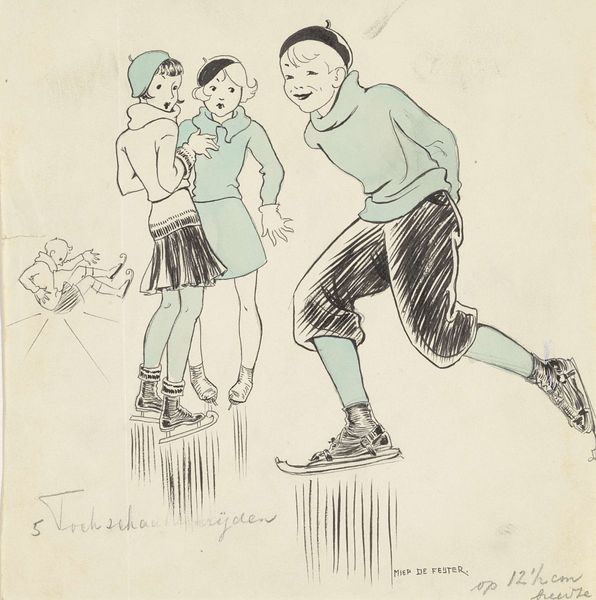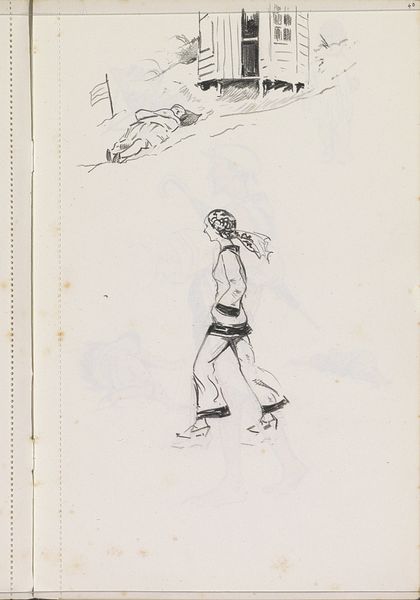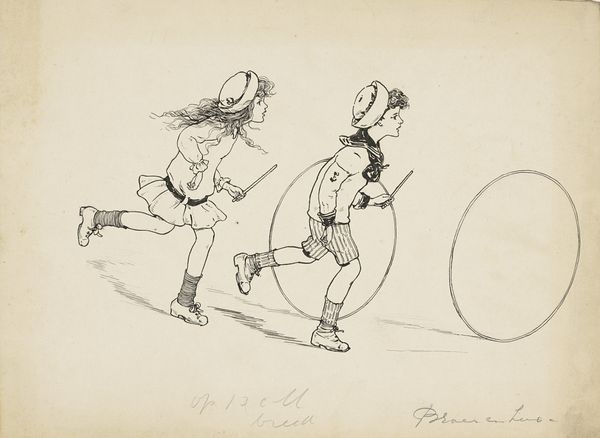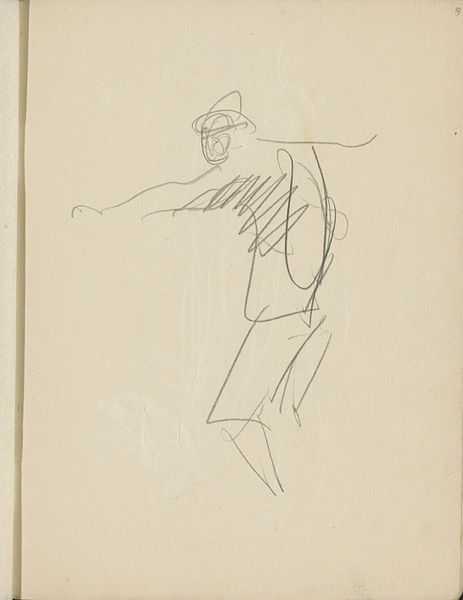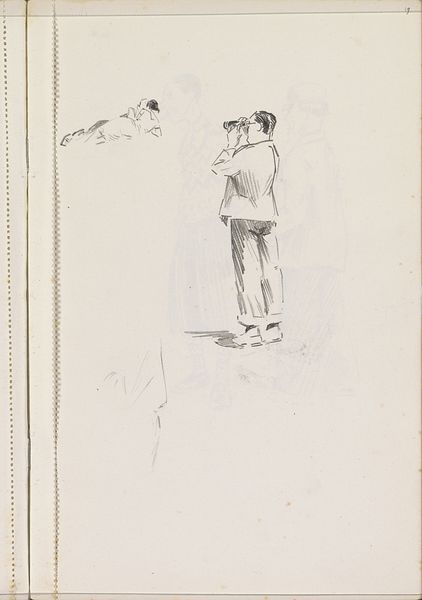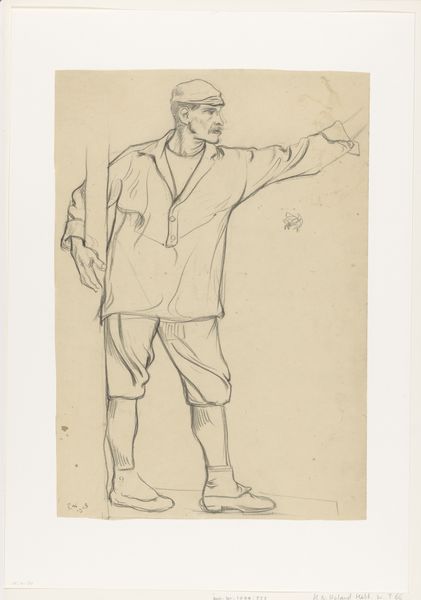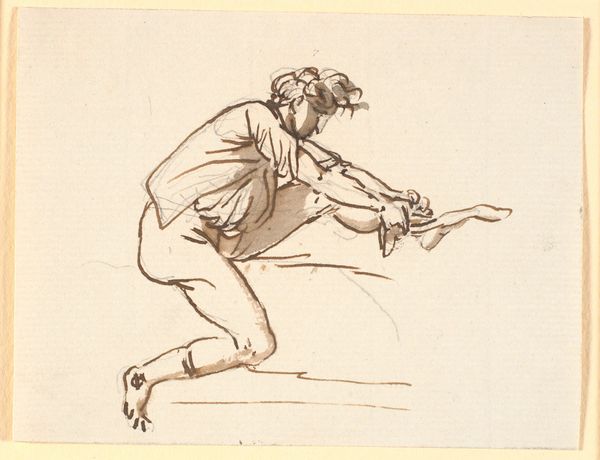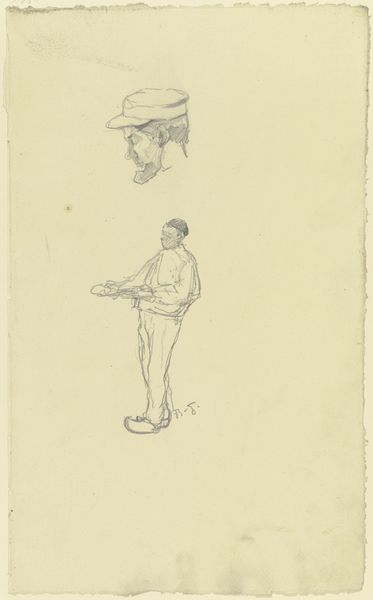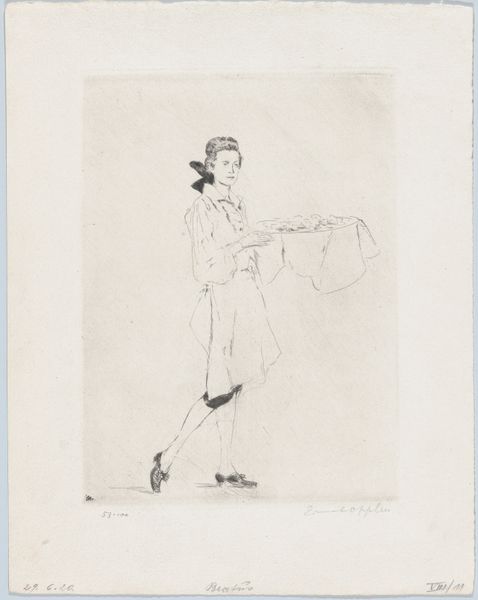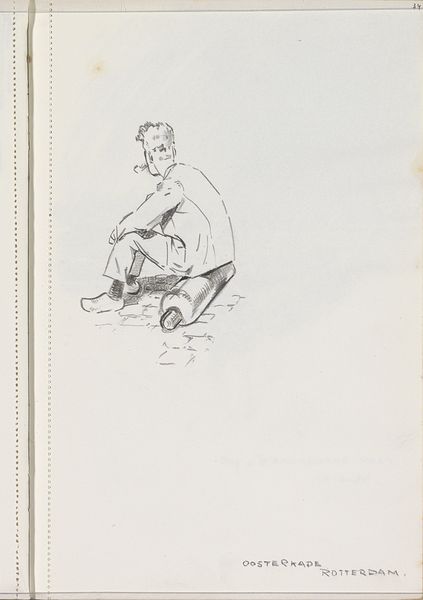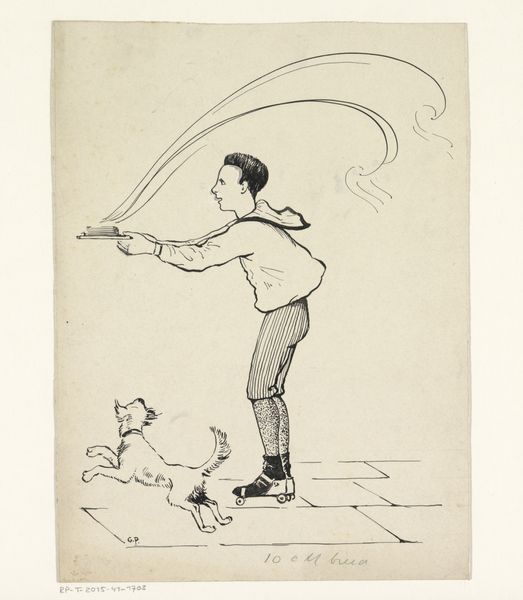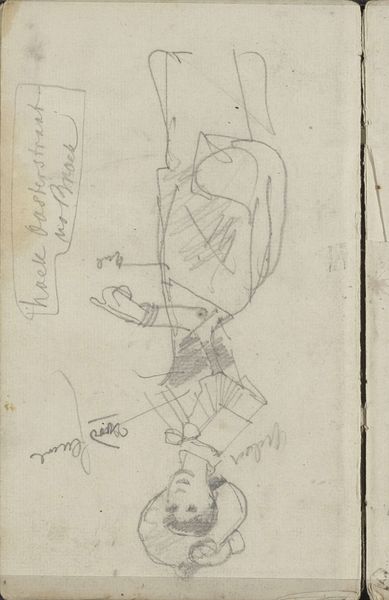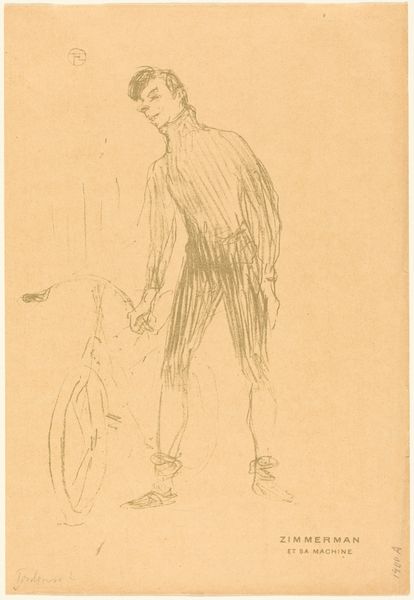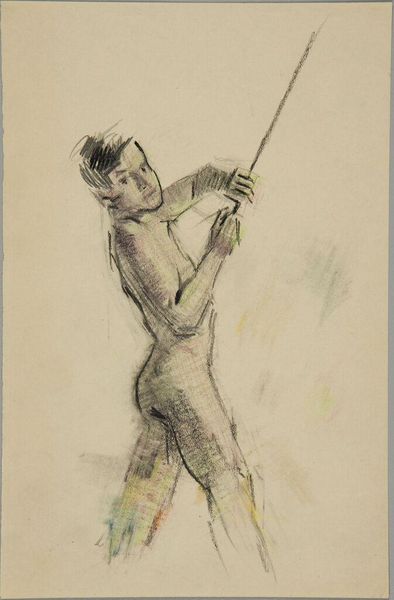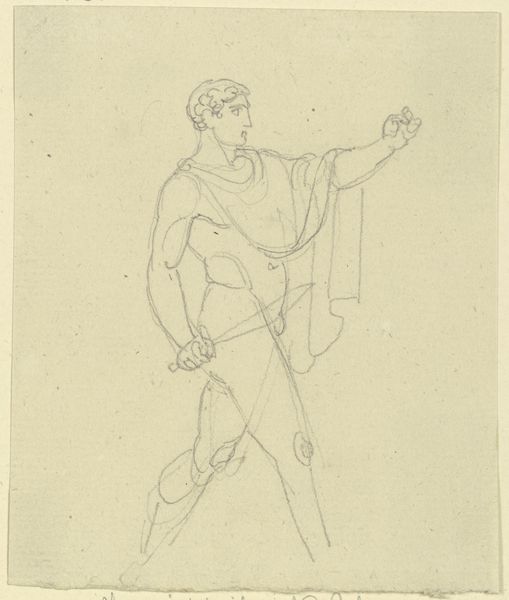
drawing, paper, pen
#
portrait
#
drawing
#
imaginative character sketch
#
quirky sketch
#
cartoon sketch
#
figuration
#
paper
#
personal sketchbook
#
idea generation sketch
#
ink drawing experimentation
#
sketchbook drawing
#
pen
#
genre-painting
#
cartoon style
#
storyboard and sketchbook work
#
academic-art
#
cartoon carciture
#
modernism
Dimensions: height 227 mm, width 190 mm
Copyright: Rijks Museum: Open Domain
Curator: So, here we have "Boy Trying to Flip a Fried Egg in a Pan" by Hans Borrebach, dating from before 1945. It’s a pen drawing on paper. Editor: It has this fun, vintage cartoon feel. I’m intrigued by the ordinary subject. What’s your take on this drawing? Curator: For me, the interest lies in the *process* the drawing captures – literally, the boy's cooking process, and figuratively, Borrebach's creative process. This isn't 'high art' attempting grand narratives. It feels immediate, like a quick sketch from daily life. Think about the materiality here: ink on paper, humble materials readily available. The labour involved is minimal compared to, say, an oil painting. Editor: I see what you mean about the deliberate simplicity. It’s interesting you point out it isn’t trying to be 'high art'. Curator: Exactly. Where does this casual domestic scene fit into art historical narratives dominated by portraiture or grand historical paintings? Instead, it highlights the material realities of everyday existence and invites us to consider artmaking itself as a form of labour, both skilled and unskilled. Does the subject of cooking suggest something about available resources? Was it produced in wartime, for instance, when resources may have been limited? Editor: I hadn’t thought about it that way, the social and economic context adding meaning to this simple act of cooking. Curator: The 'cartoon' style further reinforces this. It’s an accessible mode of representation, directly engaging with the viewer and implicitly commenting on how labor and consumption manifest in the everyday. Editor: So by focusing on materials, technique, and the depicted activity, we shift our focus away from grand interpretations to look at the material world and daily experience shaping artistic expression? Curator: Precisely. It forces us to examine what we value in art and where we draw the lines between ‘art’ and ‘craft.’ Editor: I'll definitely be thinking more about that from now on! Curator: Me too!
Comments
No comments
Be the first to comment and join the conversation on the ultimate creative platform.
